Mt. Fuji seen from Misaka pass
Firstly, let me show you "Kohshu Misaka Suimen" in "Fugaku Thirty-six Scenery"
by KATSUSHIKA Hokusai
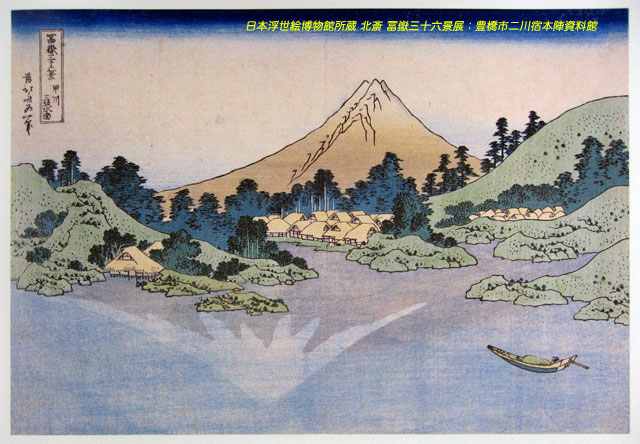
"Kohshu Misaka Suimen" in "Fugaku Thirty-six Scenery" by KATSUSHIKA Hokusai
I think this picture would be one of the double Fujis seen from the Misaka area.
The real image of the summit face of Fuji seems to be drawn realistic.
But the virtual image of the reverse Fuji is not a mirror picture, that is,
is not drawn symmetrically about the line
but is drawn symmetrically about the point, so I felt a sense of discomfort.
When looking closely, however, the real image of Fuji has a summer face, and the virtual image has a winter face.
When I could understand the picture contains double jokes, I was impressed that it is an interesting work.
This image seems to be composed of both "A summer image seen from the Fujimi Bridge on Route 137"
and "The virtual image part of the double Fuji seen from Ubugayazaki on the Misaka Road.
As I have no summer image seen from the Fujimi Bridge on Route 137,
I tried to arrange the following images as the composition of "Kohshu Misaka Suimen" by Hokusai.
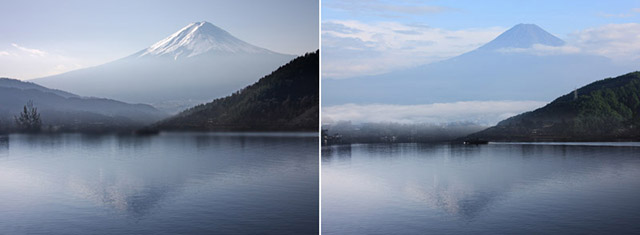
Left : Composition of "the winter Fuji seen from the Fujimi-bridge" and "the reverse Fuji seen from Ubuyagasaki"
Right : Composition of "the summer Fuji seen from Tenka-chaya" and "the reverse Fuji seen from Ubuyagasaki"
where, the right and left was reversed in the summer Fuji.
Here, let me show you another view.
I tried to use the image of Fuji seen from Mt. Mitutohge-yama as a wider view of the summer Fuji,
bacause I don't have the image of Fuji seen from Mt. Misaka-yama.
Then, I will show you the image that was made based on the image by Fujisan-live-camera by Fujigoko TV.
Fuji without snow is the image by Mitutohge-summit-camera.
The reverse Fuji with snow is the image by Lake Kawaguchi-reverse-Fuji-camera.
I made the image of Hokusai's "Kohshu Misaka Suimen" by composing these two images.
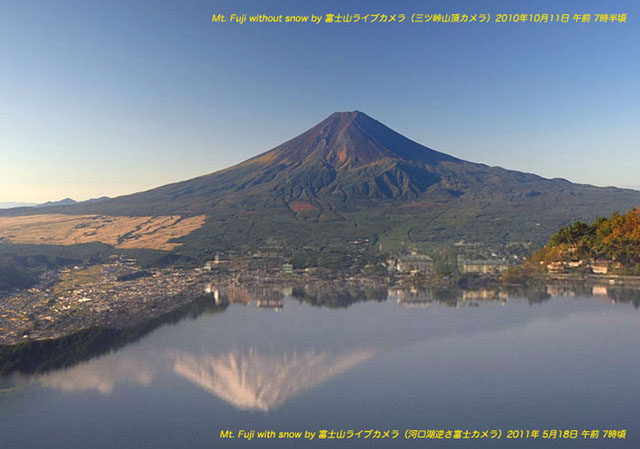
I finally got the following image.
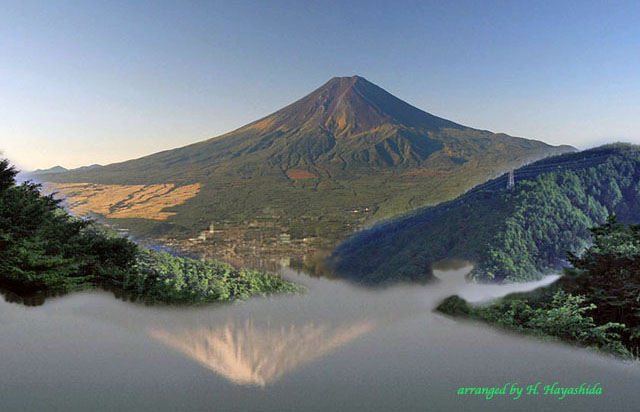

You would be able to see the following image from the opposite side.
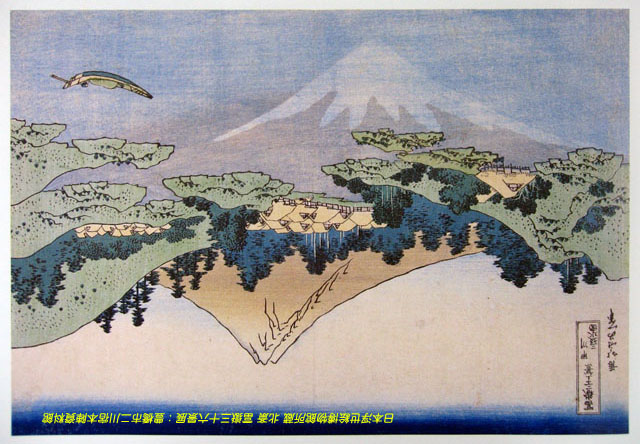
Those concepts, such as line-symmetry, point-symmetry and asymmetry, are seen
in mathematics, paintings, sculpture, architecture and garden designing etc.
His "sense of fun" of this picture, that is, to enjoy the picture from both sides at the same time,
reminds me of the topic of the music area.
Such as, a work by Mozart to play music on the one piece of music score facing each other,
and such as "Bach's crab canon", both to play normally (from the beginning) and
reversely (from the end) by using the one piece of music score.
It seemed to me the sense of fun of Hokusai is in common with those of Bach and Mozart.
----------
I will show the current Fuji seen from the Misaka Pass as below.
A view from the observatory by Fujimi-bashi (Fuji- viewing Bridge) on Route 137.
The composition made by the mountain ridges at this spot looks similar to that of Hokusai's picture.
So, this spot along the road seems important in the sense that it reminds us of Hokusai's picture.
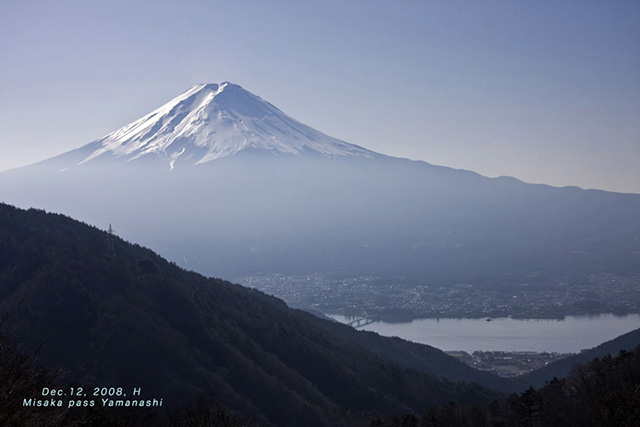
View seen from Tenka-Chaya(Tea-House) at Misaka pass
The composition made by the mountain ridges has the shape of long lozenge
like that of this picture at many places of the Misaka area.
Misaka pass & Mt. Fuji at the beginning of September

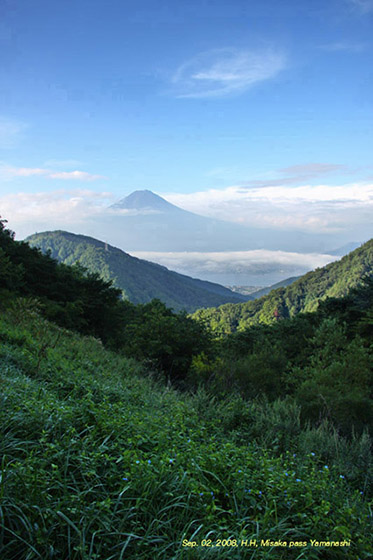
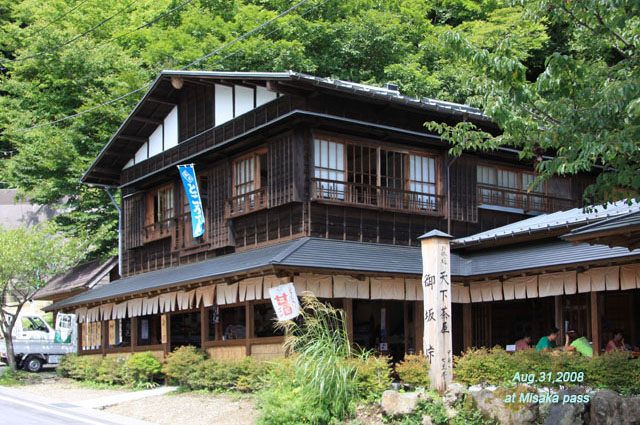
Tenka-Chaya (Tea-House) where DAZAI Osamu wrote the Novel "Fugaku-Hyakkei"
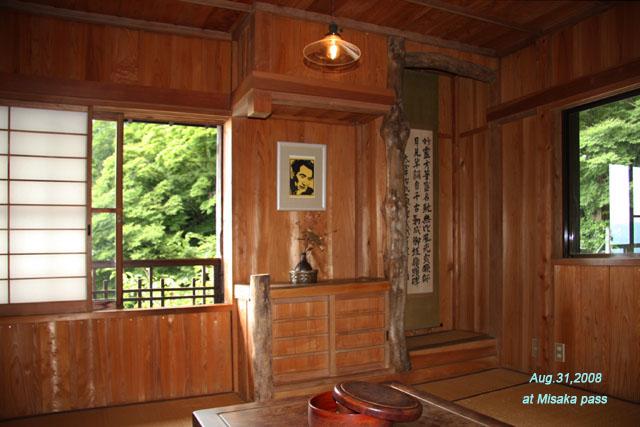
It is said that DAZAI spent a few months from mid-Sep. to mid-Nov. writing in this room.
Climbing up the pass about 50 m from the Tea-house I saw Stone tablet inscribed with DAZAI's phrase.
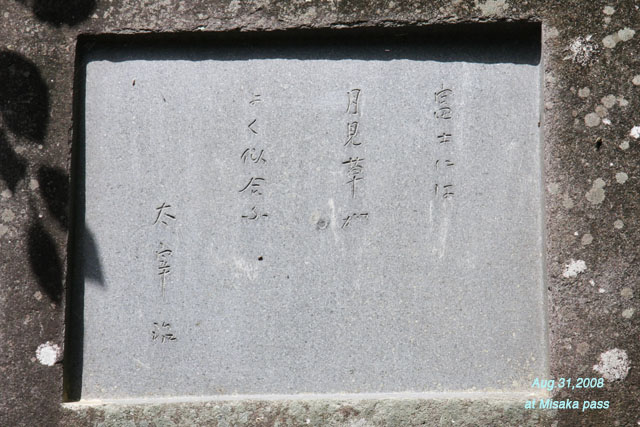
"An Evening primrose suits Fuji well."
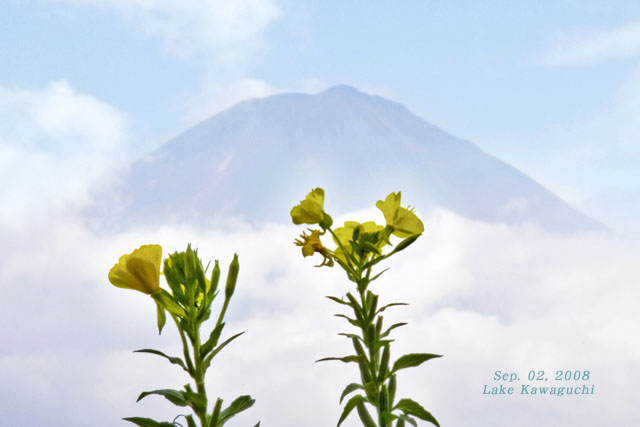
"Two pieces of Evening primroses also suit Fuji well." at Lake Kawaguchi